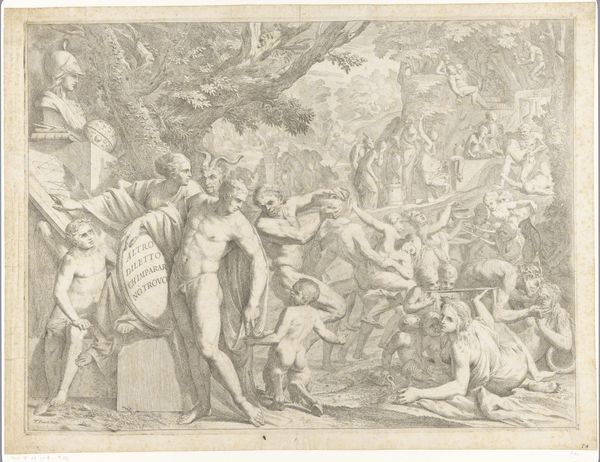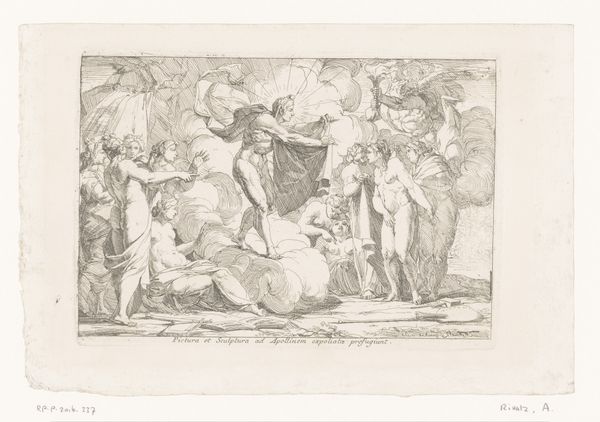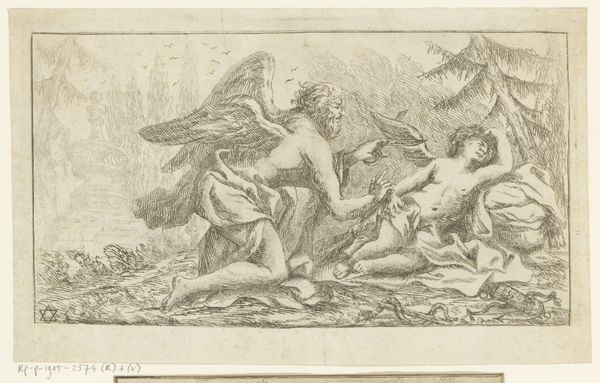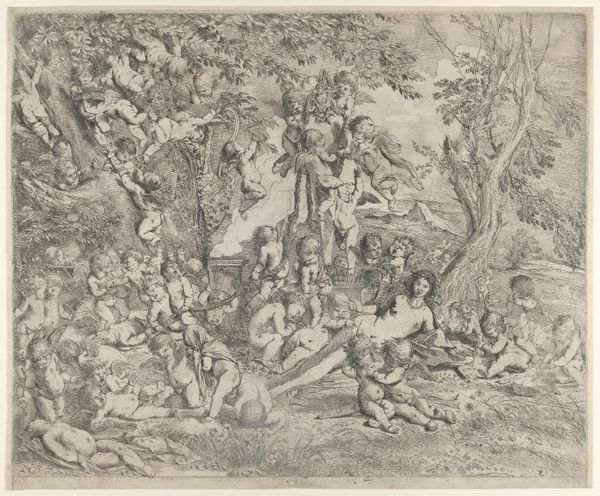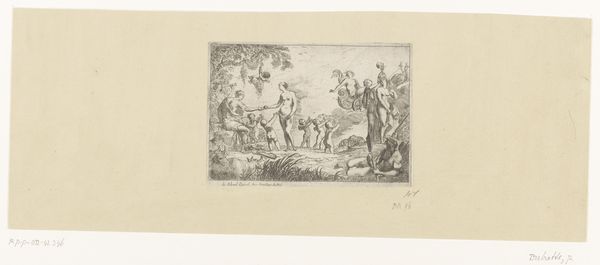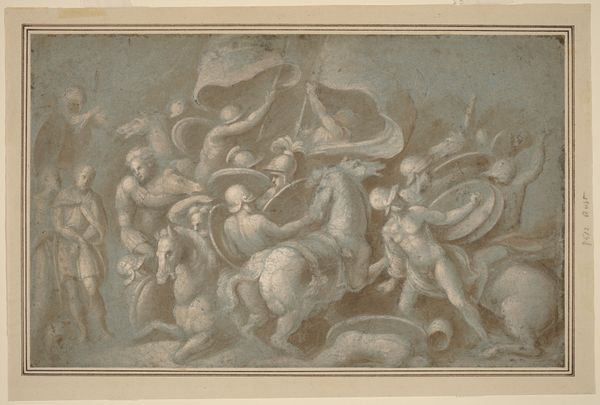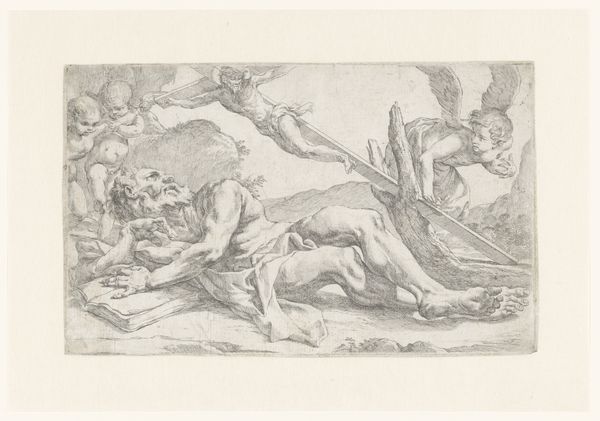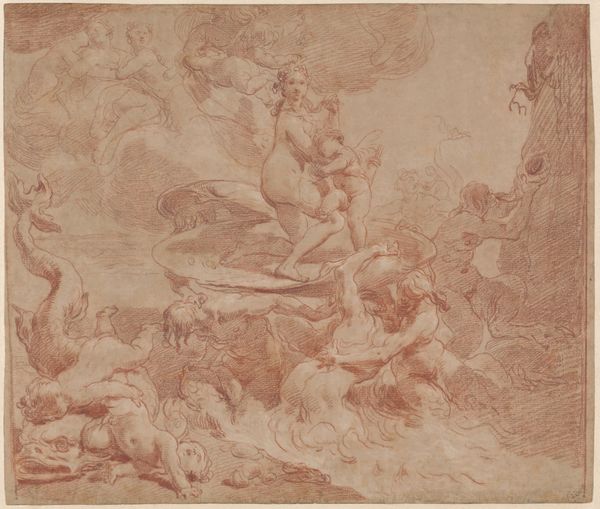
print, etching
#
allegory
#
baroque
# print
#
etching
#
etching
#
figuration
#
organic pattern
#
history-painting
Dimensions: height 493 mm, width 715 mm
Copyright: Rijks Museum: Open Domain
Pietro Testa created this drawing, "Allegory of Spring," in pen and brown ink, with brown wash, heightened with white, around 1640. The composition is dominated by a multitude of figures spread across the plane, with an open airy sky at the top, all rendered in muted monochromatic tones. The materiality is of interest here; the use of brown wash and white heightening adds depth, creating a layered effect. This dense accumulation of bodies suggests themes of fecundity and transformation that resonate with the allegory of spring. Testa uses line and shadow to create a dynamic interplay between the figures, each seemingly caught in a moment of change, reflecting a broader philosophical interest in the mutability of nature. The spatial arrangement challenges traditional perspective, encouraging the viewer to consider a more fluid, interconnected view of the world. Note how the figures are not merely representational; they are structured signs within a complex visual language where the materiality and the formal arrangements converge to express philosophical concepts about change and continuity.
Comments
No comments
Be the first to comment and join the conversation on the ultimate creative platform.


